Sutures are medical devices used to stitch together tissues in the patient's body. They are most commonly used to close a wound or surgical incision. They consist of thin threads or filaments made from various materials such as silk, nylon, or absorbable polymers.
Sutures are used in various veterinary procedures to hold the skin tissue together while it heals. Most commonly used in surgeries such as cardiovascular, orthopaedic, and general surgeries, they can also be used to close wounds from injuries.
There are many different types of sutures. The type of suture used depends on the specific medical procedure, the type of tissue being repaired, and the desired outcome of the procedure. Some sutures are designed to dissolve over time (absorbable sutures), while others need to be removed after a certain period (non-absorbable sutures).
Other common profiles of sutures can be categorised as: natural or synthetic, as well as monofilament sutures and braided sutures. It's not just the suture thread that varies; suture needles also come in a variety of profiles.
In this article, we will cover the most common categorisation of sutures and what they mean. We will look at suture thread, and the different properties associated. As well as take a deeper look at suture needles, and explore why there are different needle types and what they mean.
In this blog:
- Differences between absorbable and non-absorbable sutures
- The different types of suture materials & their properties
- Suture strength & absorption profiles for different sutures
- Types of absorption & tissue reaction
- The different types of suture structure (material) & characteristics
- Suture sizing - USP to metric conversion
- Different needle shapes & use cases
- The uses for different needle profiles & point types
Sutures: What Are the Types & What Do They Mean?

Absorbable & Non-Absorbable Sutures
The key difference between the absorbable and non-absorbable sutures is that absorbable sutures dissolve over time, whereas non-absorbable sutures do not, and need to be removed when the wound can hold itself.
Absorbable sutures are most commonly used for internal stitching and for wounds that don't require long term support. This is because they dissolve over time. There is an array of different absorbable sutures all with different absorption profiles - a topic we cover below. On the other hand, non-absorbable sutures are used when long-term support is required and are often used for external wounds that require longer healing periods.
4 Key Differences Between Absorbable and Non-Absorbable Sutures
- Material: Absorbable sutures are made from materials that break down over time and get absorbed by the body. Common materials include catgut, polyglycolic acid, and polylactic acid. Non-absorbable sutures, on the other hand, are made from materials that do not get absorbed by the body. Common materials include nylon, silk, and polyester.
- Duration: Absorbable sutures are designed to dissolve over time and are typically used for internal stitching or wounds that do not require long-term support. Non-absorbable sutures, on the other hand, are designed to provide long-term support and are often used for external wounds that require longer healing periods.
- Tissue Reaction: Absorbable sutures can cause a stronger tissue reaction than non-absorbable sutures because they are broken down by the body's enzymes, which can cause inflammation and tissue irritation. Non-absorbable sutures typically cause less of a tissue reaction because they are not broken down by the body.
- Strength: Non-absorbable sutures are generally stronger than absorbable sutures and are able to hold tissues together for longer periods of time. Absorbable sutures, however, are designed to break down over time and may lose strength as they degrade.

Suture Materials - Natural & Synthetic
There are a wide range of suture materials, all with different characterises and properties. It's important you choose the right material for the right application. Below are some of the most common materials and their use cases for veterinary medicine.
Natural
- Silk: Silk sutures can be used in veterinary medicine for skin closure in delicate tissues such as the eyes and ears. However, they are not absorbable and may cause an inflammatory response in some animals.
- Catgut: Catgut sutures are absorbable and were used for internal suturing in general surgery and for suturing soft tissues. However, they are no longer seen as best practice, with human healthcare avoiding the use of catgut altogether. Catgut does have a relatively short absorption time, but can cause an inflammatory response in some animals.
- Chromic gut: Chromic gut sutures are treated with chromium salts for increased durability and absorption time. They are often used in veterinary surgery for suturing soft tissues and for internal suturing in general surgery.
Synthetic
- Nylon: Nylon sutures are strong, flexible, non-absorbable sutures. They are easy to handle, making them suitable for many veterinary procedures. They are often used for skin closure and other procedures where long-term support is needed.
- Polyglycolic acid (PGA): PGA sutures are commonly used in veterinary medicine for internal suturing in general surgery, including in the gastrointestinal and urinary tracts. They have good tensile strength and absorb quickly, usually within two to four weeks.
- Polyglactin / Vicryl (PGLA): PGLA sutures are synthetic absorbable sutures that are often used in veterinary surgery for suturing deeper tissues and for orthopaedic procedures. They absorb over a longer period of time than PGA sutures, usually within 60 to 90 days.
- Polydioxanone (PDO): PDO sutures are synthetic absorbable sutures that are often used in veterinary plastic surgery, especially for lifting and tightening the skin. They have good tensile strength and absorb slowly over 6 months to a year.
- Polycaprolactone (PCL): PCL sutures are synthetic absorbable sutures that are often used in veterinary surgery for wound closure and for suturing the skin. They absorb over a longer period of time than most other absorbable sutures, usually within 6 to 12 months.
- Poliglecaprone / Monocryl (PGCL): PGCL sutures are synthetic absorbable sutures that are often used in veterinary surgery for suturing the skin and subcutaneous tissues. They have good handling properties and absorb quickly, usually within 90 to 120 days.
- Polypropylene: Polypropylene sutures are non-absorbable and are often used in veterinary hernia repairs and other procedures where long-term support is needed. They are strong, flexible, and easy to handle.
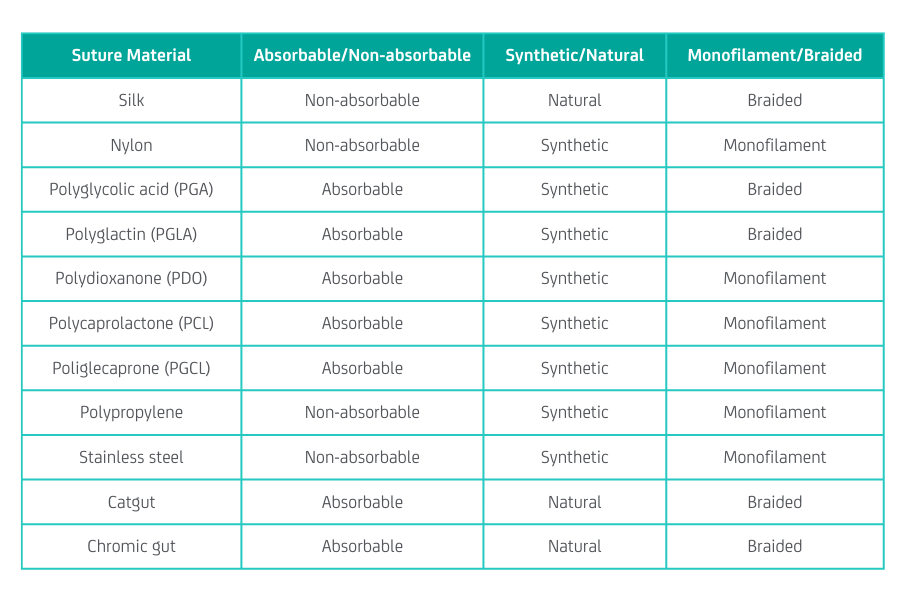
*Note that this chart only represents a few of the most common suture materials and there may be variations in suture materials available.
|
Our Meril suture range includes a wide range of synthetic absorbable sutures which are made from Polyglactin 910 (MITSU family) , Polydioxanone (FILAXYN), Poliglecaprone 25 (FILAPRON) , Polyglycolic Acid ( MEGASORB family) as well as non-absorbable sutures which are made from Polyamide ( FILAMIDE) . |
Suture Duration & Tensile Strength
It's important for veterinary professionals to consider both the duration and strength of a suture when selecting the appropriate material for a particular procedure. For example, in a procedure where long-term support is needed, such as a hernia repair, a non-absorbable suture with strong tensile strength, such as polypropylene, may be the best choice. In contrast, for internal suturing of the gastrointestinal tract, an absorbable suture with a shorter duration and sufficient strength, such as polyglycolic acid, may be more appropriate.
Suture duration refers to the length of time it takes for a suture to be completely absorbed or to lose its strength. The duration of a suture can vary widely depending on the material it is made from, its size, and its placement in the body. For example, absorbable sutures made from catgut or polyglactin 910 may be absorbed in a matter of days or weeks, while non-absorbable sutures made from nylon or stainless steel may remain in place indefinitely.
Suture strength refers to the amount of force a suture can withstand before breaking. The strength of a suture can also vary widely depending on the material it is made from, its size, and its placement in the body. Generally, larger sutures have greater strength than smaller sutures, and non-absorbable sutures have greater strength than absorbable sutures. However, the strength of a suture is also influenced by the environment it is placed in. For example, sutures placed in highly mobile areas, such as the knee joint or the abdominal wall, may experience greater stress and require stronger sutures than those placed in less mobile areas.
Tensile strength is an important property because it determines how well a suture will hold tissue together under tension. When a suture is described as retaining 50% of tensile strength for up to 14 days, it means that after 14 days of implantation, the suture will have lost about 50% of its original strength. This is a common characteristic of many absorbable sutures, which gradually lose strength as they are absorbed by the body.
The rate of strength loss for absorbable sutures can vary depending on the material used and the location of the suture in the body. Some absorbable sutures may retain 50% of their strength for a shorter or longer period of time, depending on the specific suture material and the nature of the tissue being repaired.
Types of Absorption
When in the body, absorbable sutures can be absorbed in more than one way, and thus have different absorption types. This is another suture characteristic you may come across when exploring sutures. Below is a breakdown on absorption types:
- Hydrolysis: This is the most common type of suture absorption. It involves the gradual breakdown of the suture material by water in the surrounding tissue. This process occurs through a series of chemical reactions in which water molecules break down the molecular bonds of the suture material, causing it to degrade and lose strength over time.
- Proteolysis: Some absorbable sutures are broken down by enzymes in the body. This process is called proteolysis and involves the breakdown of the suture material by specific enzymes in the surrounding tissue. Proteolysis is less common than hydrolysis, but it is an important mechanism of absorption for some suture materials.
- Phagocytosis: This type of absorption occurs when cells in the body, called phagocytes, ingest and break down the suture material. Phagocytosis is typically associated with synthetic absorbable sutures, such as polyglactin 910, which are designed to be broken down by cells in the body.
In some cases, a combination of these absorption types may occur. For example, a suture material may be broken down by both hydrolysis and phagocytosis.
Tissue Reaction
When a suture is placed in tissue, it can cause a local inflammatory response. The degree of tissue reaction can vary depending on a number of factors, including the suture material, the size of the suture, the type of tissue being repaired, and the length of time the suture is in place.
Absorbable sutures can cause a more pronounced tissue reaction than non-absorbable sutures because of the gradual breakdown of the suture material. The body's immune system may respond to the suture as a foreign object, causing inflammation and the recruitment of immune cells to the site of the suture. In some cases, this can delay healing and increase the risk of infection.
Larger sutures may cause more tissue damage and inflammation, while smaller sutures may cause less tissue reaction but may be less effective at holding the tissue together.
Close monitoring of the wound and the patient's reaction to the suture is important. Any signs of inflammation or infection should be addressed promptly to avoid complications and ensure proper healing.
Suture Structure
The main types of suture threads include monofilament, pseudo-monofilament, coated braided, braided, and twisted. These types differ in their construction, texture, tensile strength, handling characteristics, and absorbability.
- Monofilament: A single-strand suture material that is smooth and lacks any interwoven fibres. Monofilament sutures are less likely to harbour bacteria and are easy to handle due to their low coefficient of friction. They are often used in delicate surgeries that require a gentle touch, such as ophthalmic procedures. However, they can be more prone to breakage than other types of sutures.
- Pseudo-monofilament: A suture material that appears to be a monofilament, but is actually composed of several smaller fibres that are coated or twisted together. Pseudo-monofilament sutures have the handling characteristics of monofilament sutures, but with increased tensile strength due to the multiple fibres.
- Braided: Braided sutures are very strong and are often used in areas of high tension, such as orthopaedic surgeries. However, they can be more difficult to handle than monofilament or pseudo-monofilament sutures due to their higher coefficient of friction.
- Twisted: A suture material that is made up of several smaller fibres that are twisted together. Twisted sutures are very strong and have a lower coefficient of friction than braided sutures, making them easier to handle. They are often used in orthopaedic surgeries, as well as in surgeries where a stronger suture is needed. However, they can be more prone to harbour bacteria than monofilament sutures.

Suture Coatings
Sutures are often coated to enhance or provide additional characteristics, such as extent support, or reduce suture friction. The most common types of coatings include: polycaprolactone, calcium stearate, poly(glycolide/l-lactide), beeswax, and silicon.
|
Polycaprolactone helps to slow down the absorption process and provide longer-lasting support for the wound. |
Calcium Stearate is used as a lubricant and anti-tangling agent on braided sutures, to reduce friction. | Poly(glycolide/l-lactide) helps to slow down the absorption process and provide longer-lasting support for the wound. | Beeswax reduces friction between the suture threads to improve their handling characteristics. | Silicon reduces friction between the suture threads to improve their handling characteristics. |
Thread Colour
Suture threads come in several different colours. These can be: violet, black, blue, or undyed. But what's the purpose?
The colour of suture thread is a relatively simple but important aspect of surgical procedures that can help improve the accuracy and safety of the surgery for the following reasons:
- Visibility: The colour of the suture thread can make it easier for the surgeon to see the suture during the procedure, especially in areas where there is limited visibility or low lighting.
- Differentiation: Different colours of suture thread can be used to differentiate between different types of sutures or to mark specific areas of the wound. This can be helpful for keeping track of the different layers of tissue that have been sutured or for marking the location of a particular surgical site.
- Identification: The colour of the suture thread can also be used to help identify the type of suture material or the manufacturer of the suture.
Suture Sizing - USP (metric)
Suture sizes (width) are typically measured in USP or Metric. USP is defined by the United States Pharmacopoeia and does not directly indicate the actual suture diameter in mm or any other unit. Whereas metric sizes (used in the European Pharmacopoeia) define the suture diameter in units of 1/10 of a mm. This way the size number directly tells us the actual metric diameter of the suture.
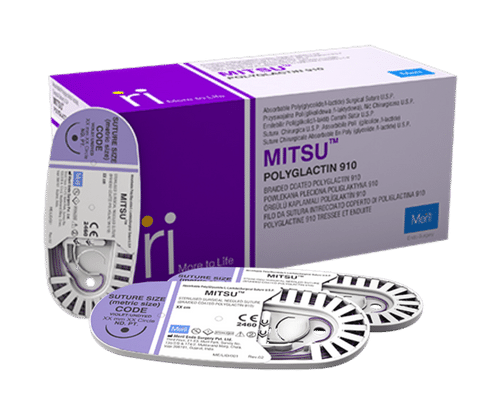
USP to Metric Conversion Table

Suture Needles - What's The Difference?
Needle Shapes
When it comes to needles, there are a number of shapes to choose from which can either be straight or have a curvature of certain degree. The difference in needle shape aids in the location of the wound & type of tissue being sutured. Typically speaking, the more curved the needle profile is, the deeper you are able to thread the suture.

Straight: These needles have a straight shaft and are typically used for suturing tissues that are easily accessible and not too deep in the body.
Typical Applications: Skin/subcutaneous layer closure; Purse string

1/4 Circle: These needles have a small curve at the end of the shaft and are useful for suturing tissues that are deeper in the body, such as the peritoneum or subcutaneous tissue.
Typical Applications: Ophthalmic/Microsurgical procedures

3/8 Circle: These needles have a slightly larger curve than the 1/4 circle needle and are commonly used for suturing delicate tissues, such as blood vessels or nerves.
Typical Applications: Skin/Subcutaneous layer/Abdominal wall closure; Ophthalmic/Vascular/Plastic procedures

1/2 Circle: These needles have a half-circle shape and are suitable for suturing tissues that are deeper in the body, such as the abdominal wall or muscles.
Typical Applications: Peritoneum closure; Gastrointestinal/ Respiratory/Urological procedures

5/8 Circle: These needles have a larger curve than the 1/2 circle needle and are typically used for suturing tissues that are difficult to reach, such as deep tissues in the pelvis or the thorax.
Typical Applications: Pelvic & Oral cavity; Urological procedures

J-Shape: These needles have a curve that forms a J-shape and are used for suturing tissues that are difficult to reach or for making a small incision in the tissue.
Typical Applications: Laparotomy closure

Ski: These needles have a slightly curved shape that resembles a ski and are used for suturing tissues that are deep or difficult to reach, such as in the hip joint or the eye.
Typical Applications: Laparoscopic procedures
Needle Profiles & Point Types
Different needle and point types are used to accommodate the varying tissue types, incision sites, and surgical techniques that may be encountered during a surgical procedure. The selection of the needle and point types should be made based on the specific needs of the patient and the surgical procedure.
Different tissues in the body have varying levels of thickness, density, and strength. A needlepoint that is suitable for one tissue may not be suitable for another. For example, a taper cut needlepoint is ideal for soft tissues, while a cutting needlepoint is better suited for dense or tough tissues.
The location and accessibility of the incision site can also impact the selection of needle and point types. For example, in laparoscopic surgeries, where incisions are made through a small puncture, a needle with a straight or ski shape may be preferred over a curved needle.
Another thing to consider is that different surgical techniques require different needle and point types. For example, a taper cut needlepoint is commonly used in suturing the skin because it can easily pass through the tissue without causing excessive trauma. On the other hand, a cutting needlepoint is commonly used in suturing muscle or fascia because it can easily penetrate through tough tissues.
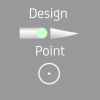
Taper point: This needle has a round body that tapers to a sharp point. It is commonly used for suturing soft tissues like skin, muscle, and fat. The tapered design allows for easy penetration through the tissue without causing excessive trauma, making it ideal for delicate procedures.

Reverse cutting: This needle has a cutting edge on the outside of the curve, which helps it to penetrate tough tissue like skin or tendons. The needle's design creates a small incision as it penetrates the tissue, which allows for a more secure suture placement. Reverse cutting needles are commonly used in procedures where the tissue is under tension or where a cosmetic result is desired.
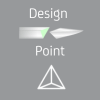
Cutting: This needle has a cutting edge on the inside of the curve and is designed to penetrate tough tissue like skin or fascia. It creates a clean incision as it passes through the tissue, which helps to prevent tearing and provides a secure suture placement. Cutting needles are commonly used in procedures where the tissue is under tension or where a cosmetic result is desired.

Diamond cutting: This needle has a unique diamond-shaped cross-section, which makes it exceptionally sharp and allows it to penetrate dense tissues like bone or cartilage. The diamond cutting design also provides a more secure suture placement, making it ideal for orthopaedic procedures or reconstructive surgery.

Premium cutting: This needle has a sharp, three-sided cutting edge that allows it to easily penetrate tough tissue like skin, fascia, or muscle. It provides a secure suture placement and is ideal for procedures where the tissue is under tension or where a cosmetic result is desired.
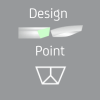
Spatula: This needlepoint is flattened and rounded at the end, similar to a spatula. It is often used in ophthalmic surgeries or in delicate procedures where precision is required. The benefits of this needlepoint include reduced tissue damage and improved manoeuvrability.
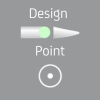
Blunt: A blunt needlepoint is rounded at the tip, making it ideal for use in tissues that are easily damaged or require gentle handling. This needlepoint is often used in neurological or plastic surgeries, as it can reduce the risk of tissue trauma.

Taper Cut: A taper cut needlepoint is sharp on both sides and tapers to a fine point. This needlepoint is ideal for use in soft tissues, as it can easily pass through without causing excessive tissue trauma. It is commonly used in general surgery, orthopaedics, and plastic surgery.








